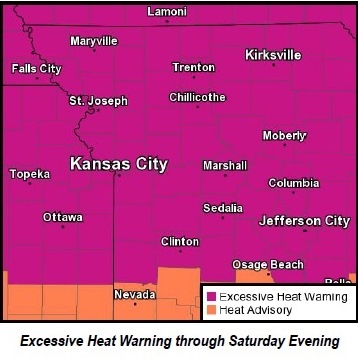by Celia Llopis-Jepsen, Kansas News Service
Attorneys for the state and the Legislature faced a barrage of questions from skeptical Kansas Supreme Court justices Tuesday scrutinizing the Legislature’s school finance plan.
Solicitor general Stephen McAllister and Jeff King, a former Senate vice president, sought to fend off claims from school districts that Kansas is doing too little to make up for several years in which budget cuts and funding stagnation became the norm and school budgets fell behind inflation.
The justices repeatedly interrupted their arguments to seek deeper clarification of calculations the state cited to justify adding $293 million to school funding over the next two years. And they showed some interest in potentially retaining jurisdiction once they have issued their ruling, to ensure the state complies.
McAllister and King stood their ground, arguing the state’s solution meets the court’s previous demands.
“S.B. 19 makes substantial efforts to improve the funding,” McAllister said, using the plan’s legislative bill number.
Digging into the math
In the span of Gannon v. Kansas’ seven-year history, district court judges and the state Supreme Court have repeatedly struck down Kansas’ school funding schemes as unconstitutional.
Among the justices’ concerns in this latest round of the legal battle was a statistical analysis of student achievement that the Legislature generated this spring and used to extrapolate what statewide funding should be. The calculation was based on spending levels at 41 school districts found to be performing well on certain academic outcomes.
“I understand the math,” Justice Dan Biles told McAllister. “I need to know what makes that reliable and valid, and I’m not seeing it here.”
The justices homed in on methodological particulars, such as the use of averages instead of medians and whether the omission of budget changes at six school districts could have skewed the results. And they questioned whether lawmakers had cherry-picked portions of past school finance studies to minimize the state’s financial obligations.
Justice Eric Rosen asked about the state’s reliance on local property taxes to fund education through a system that allows school boards to elect to spend more. The concern is that poorer school districts are less likely to do so because of the burden on local taxpayers.
“What happens to those children?” he said, referring to students in those areas.
The state board’s recommendations
Four plaintiff school districts – Kansas City, Kansas, Wichita, Dodge City and Hutchinson — are leading the lawsuit against the state, with dozens more cosponsoring it.
Their attorney, Alan Rupe, urged the justices to find the $293 million funding increase inadequate. Rupe contended that it’s worth as little as one-third of what is actually needed statewide, and is particularly unfair to poorer school districts.
The state’s plan flouts the court’s previous rulings, he argued, “moving the target away from what your instructions were, to something less.”
In 2014 the Supreme Court found that the state’s K-12 funding should be at a level suitable to help students acquire the foundational skills they will need in life. And in March the justices asked the state to address the fact that one-quarter of Kansas students are struggling with math and reading — and even higher proportions of minority children and children from low-income families.
McAllister and King argued the state is meeting its obligations to struggling children by requiring that schools spend part of their budgets on helping them and by increasing funding for preschool and kindergarten.
Rupe, however, said the state could find true guidance and expertise on appropriate spending levels by consulting the Kansas State Board of Education, a body of 10 elected officials that oversees the state’s public education system.
By law, the board must produce annual funding recommendations. It has recommended a nearly $900 million increase.
‘It’s unrealistic’
Speaking after the proceedings, Senate Majority Leader Jim Denning, of Overland Park, said the State Board of Education’s recommendation is out of reach because it would entail major tax hikes or deep cuts to other government functions, such as health care or prisons.
“It’s unrealistic,” he said. “You wouldn’t be able to raise taxes that much. Your constituents wouldn’t allow that. So you wouldn’t want to cut Medicaid — I certainly don’t want to cut Medicaid $600 million and take all the kids off Medicaid. I don’t want to not pay the corrections officers. So that’s where it gets tough for the legislative body.”
Raising taxes was one of the thorniest issues of the 2017 legislative session, which finished in June. Lawmakers struggled to close a nearly $1 billion projected deficit. After multiple attempts at a resolution, they repealed Gov. Sam Brownback’s signature 2012 income tax cuts, including exemptions for owners of more than 300,000 businesses.
Cindy Lane, superintendent of the Kansas City, Kansas, school district, expressed hope the Supreme Court would retain jurisdiction to ensure the state doesn’t renege on funding its promises.
“I think that is the only answer. It’s essential,” she said. “I worry a lot that we’ll repeat what happened in the Montoy case if jurisdiction does not remain with the court.”
Lane was referring to another seven-year school finance lawsuit, which closed in 2006 after the state crafted a three-year plan to gradually add in more than $750 million in annual funding for schools.
The Montoy plan fell by the wayside when the recession hit and governors Kathleen Sebelius and Mark Parkinson slashed hundreds of millions of dollars from K-12 spending in 2009.
It was not later restored, prompting school districts to file a new lawsuit in 2010. They say schools have fallen hundreds of millions of dollars behind inflation.
Weak state position?
Democratic Sen. Lynn Rogers, a member of the Wichita school board – another of the plaintiff districts – suggested the justices’ skepticism on Tuesday reflected the weakness of the state’s claims regarding its $293 million increase.
“The justices really had seen through many of the state’s arguments,” he said, “and understood that this wasn’t really new money, it was money they were putting back in. And it wasn’t even keeping pace with inflation if you look at the last three years.”
Denning, who directed legislative researchers to produce the analysis that the state is leaning on in its defense, said he thinks the Legislature did a good job of attempting a logical calculation for funding schools.
The Supreme Court had asked for this type of rationale, he said, but “didn’t give us any direction going into it.”
“And I actually thought that they would be very pleased,” Denning said.
Celia Llopis-Jepsen is a reporter for the Kansas News Service, a collaboration of KCUR, Kansas Public Radio and KMUW covering health, education and politics. You can reach her on Twitter @Celia_LJ. Kansas News Service stories and photos may be republished at no cost with proper attribution and a link back to kcur.org.
See more at http://kcur.org/post/kansas-supreme-court-justices-hammer-state-lawyers-school-funding-questions.




